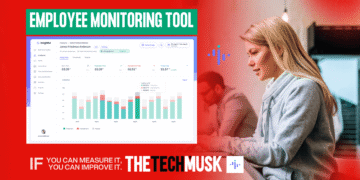From Advanced Persistent Threats (APTs) to weak passwords, here are eight answers to the question, “Currently, what are the top cyber security threats to know about and why?”
- Advanced Persistent Threats
- Social Engineering
- Unauthorized Peripherals
- Insider Threats
- Credential Stuffing
- Mobility
- Phishing
- Weak Passwords
Advanced Persistent Threats
Advanced Persistent Threats (APTs) are one of the most dangerous and stealthy forms of cyber-attacks, which can cause severe damage to individuals, organizations, and even governments. Often sponsored by state actors or organized cyber-criminals, APTs use sophisticated techniques to infiltrate computer systems, remain undetected for long periods of time, and steal sensitive data without being noticed.
Unlike traditional malware attacks, APTs bypass traditional security measures such as firewalls and antivirus software by using a combination of social engineering, zero-day exploits, and backdoors. Once they gain access to the target system, they can perform a range of malicious activities such as espionage, data theft, sabotage, and even disruption of critical infrastructure.
Anirban Saha, Founder, TechBullish
Social Engineering
Social engineering is a top cybersecurity threat because it targets people rather than technical vulnerabilities and is evolving rapidly. Social engineering attacks, including phishing, pretexting, and baiting, can lead to severe consequences, such as data breaches, financial loss, and reputational damage.
Protecting against these attacks requires vigilance, skepticism, and education about common tactics, as well as implementing security measures, such as two-factor authentication and employee training programs.
Shawnee Wright, Business Development Manager, Integrated Axis Technology Group, Inc.
Unauthorized Peripherals
Connecting unauthorized or unknown peripherals, such as USB flash drives, to your company’s computers is among the top cyber security threats likely to completely shut down your systems.
Cybercriminals target gullible employees who are unaware of the risks associated with this and manipulate them to share files through their computers to the flash drive. Once inserted into the computer, it installs malware that can spy on or steal sensitive company information. In extreme cases, they can launch a more severe attack this way.
Liam Liu, Co-founder and CMO, ParcelPanel
Insider Threats
Insider threats are some of the more insidious cyber security threats that organizations face today. These threats are often difficult to detect because they emanate internally from individuals who have authorized access to the company’s systems.
Insider threats can take the form of sabotaging networks, theft of sensitive company information, and the willful or accidental injection of malware into a company’s computer systems.
Will Baker, Founder, Skirtings R Us
Credential Stuffing
Credential stuffing is one of the top cybersecurity threats. It works surprisingly well and is one of the major ways that hackers can gain access to systems and accounts. It is when they leverage username and password data from a breach or leak and try it at other places. If your employees use the same password for a work account as they do for a personal account, then you are exposed.
The ways to prevent this are to use a password manager so all of your passwords are unique and to use multi-factor authentication. In the first case, with a password manager, each of your passwords will only work in one place. Trying a known password from one site somewhere else will never work. In the second case, even if someone guesses your password, you would still need to provide the token from the second factor (from an authenticator app, hardware token, or SMS).
James Wilson, Personal Cybersecurity Expert, My Data Removal
Mobility
In a connected car, information can be exchanged between the vehicle and external systems. By doing this, the car can connect to the internet and exchange data with other devices, whether they are inside or outside the vehicle.
The issue with that is an ultimate niche for hackers. Hackers can collect private information about the vehicle and make changes that can have dangerous consequences for the driver and others around them. It is not uncommon for the mobility industry to be overlooked in aspects of cybersecurity, but there are some areas where awareness should be raised.
Marco Genaro Palma, Co-founder, TechNews180
Phishing
When considering the reasons behind organizational security breaches, it’s highly probable that phishing was either the initial method of attack or used during a particular stage of the attack process.
While investing in the latest cybersecurity tools may provide a sense of security, it’s the employees who serve as the first line of defense, and consequently, are the most targeted. Human nature predisposes people to be trusting, making phishing the most prevalent cyber threat to businesses.
It’s crucial to regularly train employees in cybersecurity awareness, especially when onboarding new hires. To further enhance an organization’s resilience to phishing, internal phishing campaigns can be utilized to pinpoint at-risk employees who may serve as a gateway for a business breach.
Manraaj Mand, Managing Director, Mand Consulting Group
Weak Passwords
Despite advancements in technology and security measures, weak passwords are still one of the top cybersecurity threats to look out for. The reason behind this is quite simple; most people still use easy-to-guess passwords such as their date of birth or “password123.” This makes it easier for cybercriminals to gain unauthorized access to personal information or sensitive data stored online.
Weak passwords become even more dangerous when paired with other security vulnerabilities, like phishing scams or malware attacks. Therefore, it is important to use a strong password comprising a combination of numbers, letters, and symbols, and avoid using the same password for multiple accounts. Regularly updating your passwords and enabling multi-factor authentication can also add an extra layer of security and safeguard against potential threats.
Tarun Saha, Co-founder and CEO, StallionZo



















